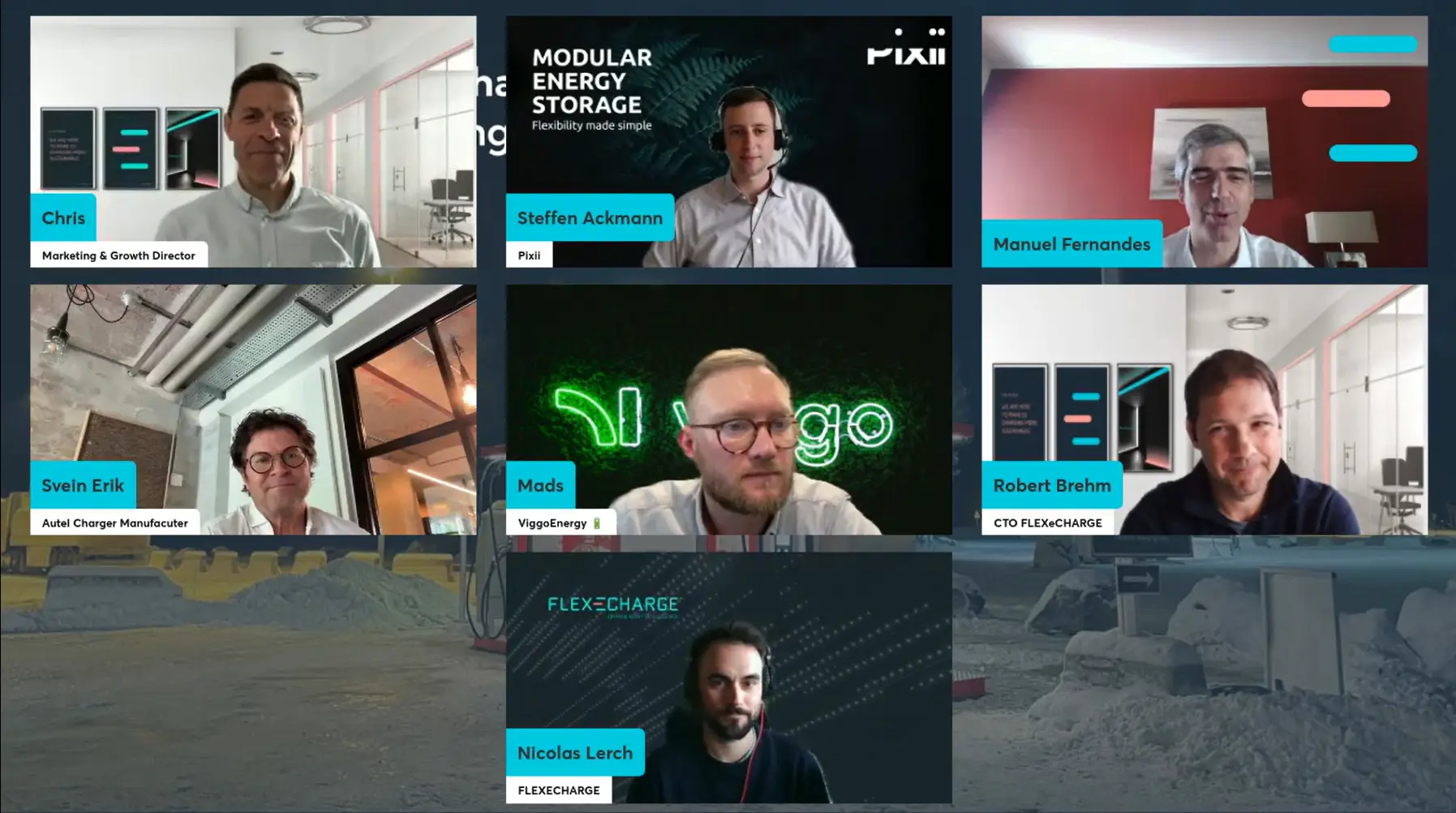Exploring Battery Storage for EV Charging: Opportunities, Challenges, and Solutions

During our recent webinar on "Battery Storage for EV Charging Infrastructure: Opportunities, Challenges, and Solutions" we explored how battery energy storage systems (BESS) can revolutionize the EV charging landscape.
Here's a summary of the key points discussed:
Introduction and Overview
The webinar began with an overview of the current EV market and the increasing demand for efficient charging infrastructure. As EV adoption rises, the need for robust and scalable solutions to manage this demand becomes critical. Battery storage emerges as a pivotal technology to address these needs by enhancing grid stability and maximizing the use of renewable energy.

Opportunities with Battery Storage
We delved into several opportunities that BESS presents for EV charging infrastructure:
1. Grid Stability and Peak Shaving: BESS can store excess energy and release it during peak demand times, reducing the strain on the grid and minimizing peak load charges
2. Integration with Renewable Energy: By coupling BESS with renewable energy sources like solar or wind, CPOs can ensure a more reliable and green energy supply for EV charging stations
3. Revenue Streams: BESS enables participation in energy markets, such as frequency containment reserves (FCR), providing CPOs with additional revenue opportunities through services like demand response and energy trading
Challenges in Implementing Battery Storage
The discussion also highlighted several challenges:
1. High Initial Costs: The significant upfront investment for BESS can be a barrier, although long-term savings and operational efficiencies can offset these costs
2. Technical Integration: Integrating BESS with existing grid infrastructure and EV charging networks requires advanced load management systems and coordination with grid operators
3. Regulatory Hurdles: Navigating the regulatory landscape is complex, with varying policies and incentives affecting BESS deployment across regions
.jpeg)
Solutions and Best Practices
The webinar concluded with best practices for leveraging BESS effectively:
1. Intelligent Load Management: Utilizing platforms like HARMON-E for dynamic load management can optimize energy distribution, prevent grid overloads, and ensure cost-efficient operations
2. Collaborative Efforts: Engaging with stakeholders, including utility companies, policymakers, and technology providers, is crucial for creating a supportive ecosystem for BESS integration
3. Successful Case Studies: Highlighting examples where BESS has been successfully integrated into EV charging infrastructure, demonstrating the tangible benefits and potential for scalability
In conclusion, battery storage offers significant advantages for EV charging infrastructure by enhancing grid stability, integrating renewable energy, and providing new revenue opportunities. However, overcoming initial costs, technical challenges, and regulatory hurdles is essential for successful implementation. By adopting best practices and leveraging advanced technologies, CPOs can harness the full potential of BESS to create a sustainable and profitable EV charging network.
Access the full replay here.

What is Load Management and why is it essential for EV Charging
Explore the essentials of advanced Load Management in this guide. Uncover the complexities of integrating EV charging systems with existing power grids, a critical challenge in energy management. Discover how solid Load & energy management solutions ensure an efficient, secure, and scalable charging infrastructure.


Interesting reads


How Battery Energy Storage and Virtual Power Plants Are Redefining CPO Profitability


How to Generate New Revenue Streams With Battery Energy Storage Systems (BESS) on EV Charging Sites


November 2025: Megawatt Ambition, Grid Innovation, and Strategic Partnerships Reshape Europe's EV Landscape


Max Brandt on Talking New Energy: How FLEXECHARGE Is Shaping the Future of EV Charging Flexibility

Get started with
FLEXECHARGE
Contact our team to learn more about what we can help you achieve with our open, vendor agnostic platform and powerful solutions.
